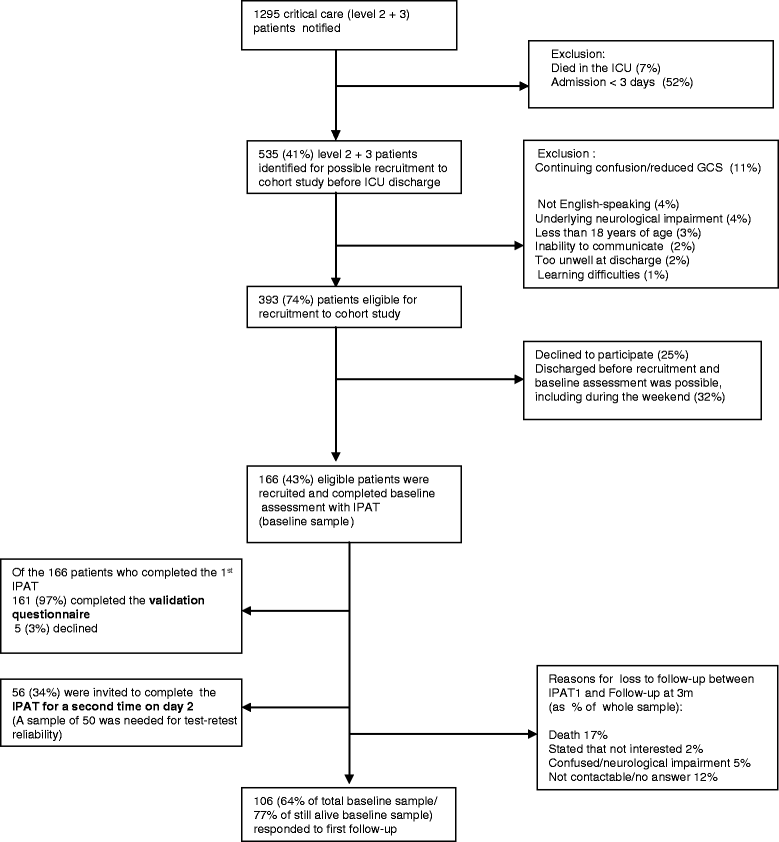Detecting acute distress and risk of future psychological morbidity in critically ill patients: validation of the intensive care psychological assessment tool
- PMID: 25248614
- PMCID: PMC4207352
- DOI: 10.1186/s13054-014-0519-8
Detecting acute distress and risk of future psychological morbidity in critically ill patients: validation of the intensive care psychological assessment tool
Abstract
Introduction: The psychological impact of critical illness on a patient can be severe, and frequently results in acute distress as well as psychological morbidity after leaving hospital. A UK guideline states that patients should be assessed in critical care units, both for acute distress and risk of future psychological morbidity; but no suitable method for carrying out this assessment exists. The Intensive care psychological assessment tool (IPAT) was developed as a simple, quick screening tool to be used routinely to detect acute distress, and the risk of future psychological morbidity, in critical care units.
Methods: A validation study of IPAT was conducted in the critical care unit of a London hospital. Once un-sedated, orientated and alert, critical care patients were assessed with the IPAT and validated tools for distress, to determine the IPAT's concurrent validity. Fifty six patients took IPAT again to establish test-retest reliability. Finally, patients completed posttraumatic stress disorder (PTSD), depression and anxiety questionnaires at three months, to determine predictive validity of the IPAT.
Results: One hundred and sixty six patients completed the IPAT, and 106 completed follow-up questionnaires at 3 months. Scale analysis showed IPAT was a reliable 10-item measure of critical care-related psychological distress. Test-retest reliability was good (r =0.8). There was good concurrent validity with measures of anxiety and depression (r =0.7, P <0.01; r =0.6, P <0.01). With a cut-point of ≥7, the IPAT had 82% sensitivity and 65% specificity to detect concurrent anxiety; and 80% sensitivity and 66% specificity to detect concurrent low mood (area under the curve (AUC) =0.8 for both). Predictive validity for psychological morbidity was good (r =0.4, P <0.01; r =0.64, P <0.01 for PTSD with days 1 and 2 data). The IPAT had 69% specificity and 57% sensitivity to predict future psychological morbidity (AUC =0.7).
Conclusions: The IPAT was found to have good reliability and validity. Sensitivity and specificity analysis suggest the IPAT could provide a way of allowing staff to assess psychological distress among critical care patients after further replication and validation. Further work is also needed to determine its utility in predicting future psychological morbidity.
Figures

References
-
- Wade D, Hardy R, Howell D, Mythen M. Identifying clinical and acute psychological risk factors for PTSD after Intensive Care: a systematic review. Minerva Anestesiol. 2013;79:944–963. - PubMed
Publication types
MeSH terms
LinkOut - more resources
Full Text Sources
Other Literature Sources
Medical

